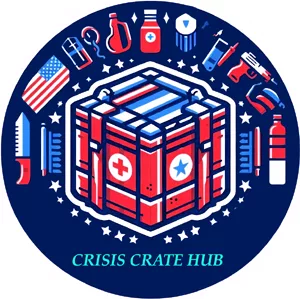Table of Contents
In a survival situation, having the right cooking tools can make all the difference between a stressful experience and a manageable one. It’s not just about having the tools, though; it’s about optimizing your setup to ensure you can prepare food efficiently and safely, no matter where you are.
Nowadays, a lot of folks might gravitate toward sleek, modern cooking gear. High-tech portable stoves, titanium cookware, and fancy gadgets all sound pretty exciting. But there’s a lot of merit in considering some good ol’ traditional tools, too. These can often be more durable and easier to fix if something goes awry. Think fire-starting kits, cast iron skillets, and rugged outdoor utensils.
Speaking of essentials, let’s get down to brass tacks with some must-have gear. A reliable portable stove tops the list for its convenience and ease of use. You’ll also want a durable grill grate if open-fire cooking is on the agenda. Don’t overlook portable cookware sets that stack neatly for easy storage while keeping you ready to whip up a meal at a moment’s notice.
Not everyone’s looking to break the bank either. Thankfully, there’s plenty of budget-friendly equipment out there. It’s perfectly possible to kit yourself out with solid tools without spending a fortune. Keep an eye out for sales or second-hand options that often have great bargains. Experienced survivalists often swear by these methods to get geared up without burning a hole in their pockets.
Honing in on this prep work ensures you have the basics down. When the chips are down, and you’re relying on your cooking tools, you’ll be glad you took the time to choose well. These essentials serve as building blocks to expand upon as you refine your skills and prepare for every eventuality.
Multifunctional Tools and Their Advantages
When packing for survival, every ounce counts. That’s where multifunctional tools come into play. Instead of loading up your bag with countless gadgets, you can streamline your gear with cleverly designed tools that pull double duty.
Take the humble spork, for instance. It’s a spoon and a fork combo, ideal for cutting down the number of utensils you need. Plus, it’s super light and fits easily into any pack. Another great option is a multi-tool knife. These are pocket-sized powerhouses, equipped with blades, screwdrivers, bottle openers, and more, all in one compact device.
The Dutch oven is another gem in the realm of multifunctional tools. You can use it for baking, frying, boiling, and even roasting. Its versatility makes it a fantastic option when you only have room to carry one pot or pan. Yes, it’s a bit heavier, but the range of cooking methods it supports is unbeatable.
Foldable utensils are also worth considering. They collapse into a smaller size, saving space, but extend to full-size when you’re ready to eat. This convenience can’t be overstated when you’re trying to keep things light but functional.
Relying on these kinds of tools not only minimizes your pack weight but also maximizes your options in the field. In a survival scenario, adaptability is key, and having the right multifunctional tools can make tackling the unexpected that much easier.
Traditional and Primitive Cooking Methods for Wilderness Surviving
Primitive cooking might seem outdated to some, but when modern conveniences fail, these age-old methods can prove invaluable. They’re not just backup plans; they offer a connection to the land and a way to make the most of available resources.
A campfire is probably the most versatile tool you’ve got in the wild. With some know-how, it’s possible to cook almost anything. Roasting skewered meat or vegetables directly over flames gives food a unique flavor, while baking in the embers allows for different textures and depth of taste.
Ever heard of a smoke pit? It’s one way to slow-cook meat to perfection, using underground heat to tenderize tough cuts. This method is especially useful when fuel is scarce or you’re aiming to preserve flavor over longer periods.
Using clay pots or earthenware is another primitive technique worth exploring. These natural vessels can handle a variety of cooking tasks, from stews to baking bread. While a bit heavier to carry, they provide a unique ability to maintain moisture and imbue food with a distinct, earthy taste.
Each of these methods comes with its own set of challenges and benefits. By learning a few of them, you can ensure you’re prepared to handle whatever nature throws your way, turning limited resources into hearty, satisfying meals.
Maintenance, Safety, and Storage Tips: Prolonging the Lifespan of Your Tools
Proper tool maintenance is crucial, especially in the wild where replacements aren’t an option. Beginnings are often about selecting quality gear, but keeping that gear in top shape ensures it performs well over time.
Start by regularly cleaning your cooking tools. After each use, give everything a thorough scrub, making sure there’s no food residue left that could lead to rust or corrosion. For cast iron, seasoning it with oil helps maintain its non-stick quality and prevent rust.
Safety around open flames and heat-intensive tools can’t be stressed enough. Always manage fire responsibly, keeping it contained and controlled. Using heat-resistant gloves can help protect your hands from burns while cooking or handling hot equipment.
Storage practices matter, too. If you’re in a damp environment, prioritize drying your gear completely before packing it away. This prevents moisture from leading to rust damage. Having a designated dry bag or storage area can make this process easier, keeping tools safe from the elements.
Routine checks are great for catching wear and tear early. Keep a checklist handy for essential maintenance tasks, and inspect your tools for signs of wear. Replace any parts as needed to ensure everything functions as it should when you need it most.
